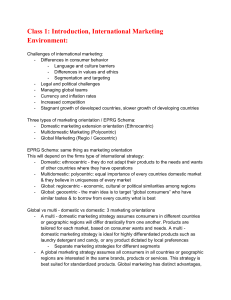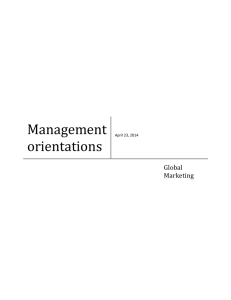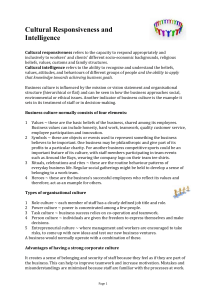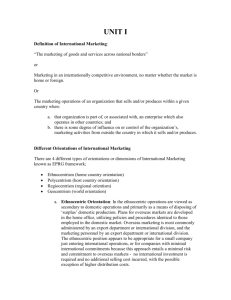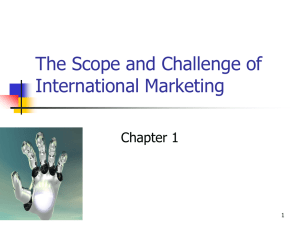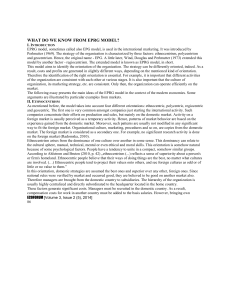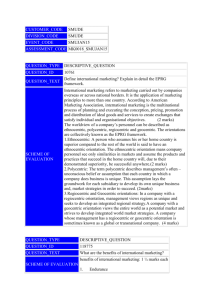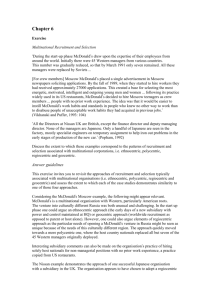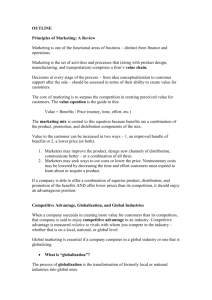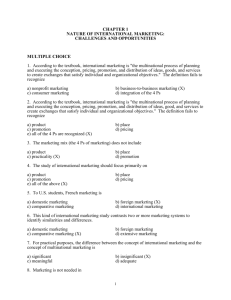CHAPTER 4 MARKETING ENTRY STRATEGIES FOREIGN
advertisement
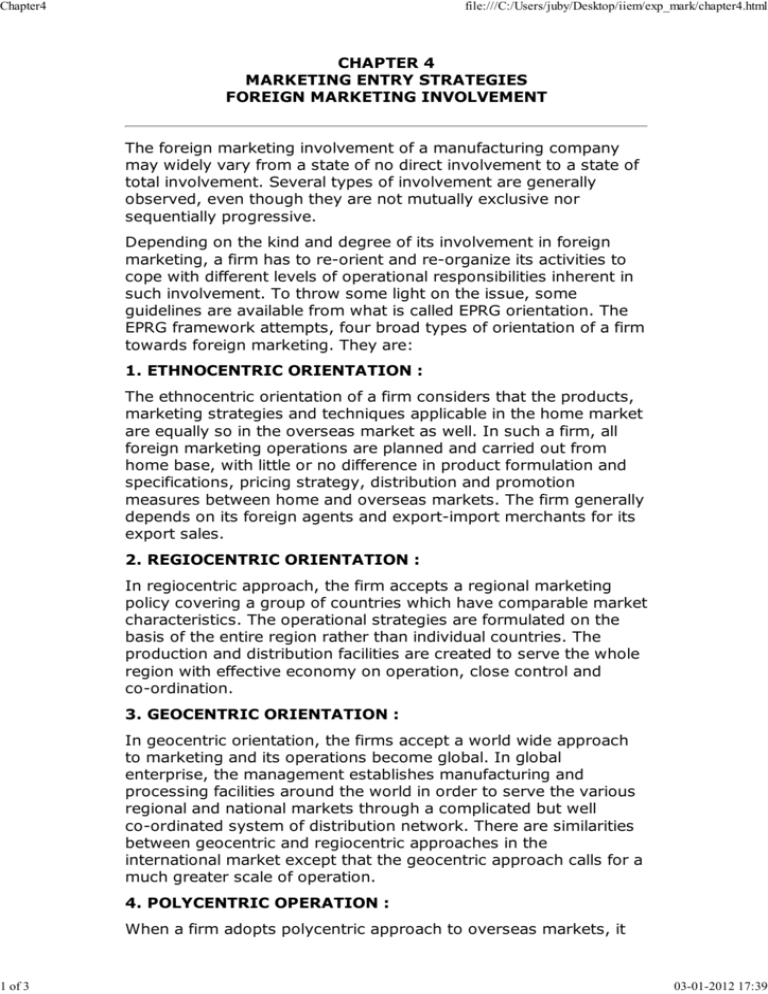
Chapter4 1 of 3 file:///C:/Users/juby/Desktop/iiem/exp_mark/chapter4.html CHAPTER 4 MARKETING ENTRY STRATEGIES FOREIGN MARKETING INVOLVEMENT The foreign marketing involvement of a manufacturing company may widely vary from a state of no direct involvement to a state of total involvement. Several types of involvement are generally observed, even though they are not mutually exclusive nor sequentially progressive. Depending on the kind and degree of its involvement in foreign marketing, a firm has to re-orient and re-organize its activities to cope with different levels of operational responsibilities inherent in such involvement. To throw some light on the issue, some guidelines are available from what is called EPRG orientation. The EPRG framework attempts, four broad types of orientation of a firm towards foreign marketing. They are: 1. ETHNOCENTRIC ORIENTATION : The ethnocentric orientation of a firm considers that the products, marketing strategies and techniques applicable in the home market are equally so in the overseas market as well. In such a firm, all foreign marketing operations are planned and carried out from home base, with little or no difference in product formulation and specifications, pricing strategy, distribution and promotion measures between home and overseas markets. The firm generally depends on its foreign agents and export-import merchants for its export sales. 2. REGIOCENTRIC ORIENTATION : In regiocentric approach, the firm accepts a regional marketing policy covering a group of countries which have comparable market characteristics. The operational strategies are formulated on the basis of the entire region rather than individual countries. The production and distribution facilities are created to serve the whole region with effective economy on operation, close control and co-ordination. 3. GEOCENTRIC ORIENTATION : In geocentric orientation, the firms accept a world wide approach to marketing and its operations become global. In global enterprise, the management establishes manufacturing and processing facilities around the world in order to serve the various regional and national markets through a complicated but well co-ordinated system of distribution network. There are similarities between geocentric and regiocentric approaches in the international market except that the geocentric approach calls for a much greater scale of operation. 4. POLYCENTRIC OPERATION : When a firm adopts polycentric approach to overseas markets, it 03-01-2012 17:39 Chapter4 2 of 3 file:///C:/Users/juby/Desktop/iiem/exp_mark/chapter4.html attempts to organize its international marketing activities on a country to country basis. Each country is treated as a separate entity and individual strategies are worked out accordingly. Local assembly or production facilities and marketing organisations are created for serving market needs in each country. Polycentric orientation could be most suitable for firms seriously committed to international marketing and have its resources for investing abroad for fuller and long-term penetration into chosen markets. Polycentric approach works better among countries which have significant economic, political and cultural differences and performance of these tasks are free from the problems created primarily by the environmental factors. CONCLUSION : The involvement decision is conditioned by a variety of internal and external factors such as firms' export policy, resources and product range, volume of export business, regulatory and procedural conditions to be fulfilled both from exporting and importing angle. From the foregoing, it will be evident that the scope of international marketing for a firm will be determined by its decisions regarding the means of entry into foreign markets as well as by the kind of involvement the firm wishes to have in its international marketing operations. It cannot be said that one kind of operation/orientation is better than the other, as each has its own advantage and disadvantage depending on the operating environmental factors. However, a firm can adopt a policy of common or differential approaches in respect of different marketing decision areas. In practice, planning the ethnocentric approach is found to be most common when overseas volume is insignificant, compared to the total sales turnover, or if the firm does not want to go for higher volume of overseas sales for some reason. Since little or no investment is needed, ethnocentric oriented firms have the least risk. Main Points An exporting company's international operation involves the following strategies. 1. Ethno centric Operational strategy : (with the help of overseas Agents) Product formulation Product specification Pricing strategy Distribution Promotional measures 2. Regiono Centric Operational strategy : Catering to a group of Countries having similarity in Marketing in market 03-01-2012 17:39 Chapter4 3 of 3 file:///C:/Users/juby/Desktop/iiem/exp_mark/chapter4.html characteristic 3. Geo Centric Operational strategy : Creating globally through well Co-Ordinated Net work 4. Poly centric operational strategy : Creating to Country to country basis There are various modes of entry available to a firm to enter international markets. A firm may have a production faciity in its home country or locate it in a foreign country. It has to choose the alternative most suited to its needs and requirements. 03-01-2012 17:39

